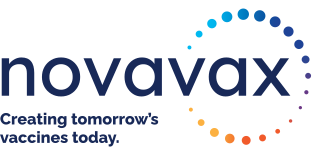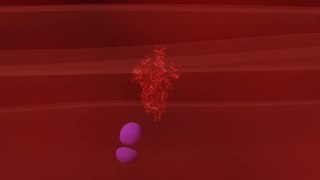Related Research Articles

Severe acute respiratory syndrome (SARS) is a viral respiratory disease of zoonotic origin caused by the severe acute respiratory syndrome coronavirus, the first identified strain of the SARS coronavirus species, severe acute respiratory syndrome–related coronavirus (SARSr-CoV). The first known cases occurred in November 2002, and the syndrome caused the 2002–2004 SARS outbreak. In the 2010s, Chinese scientists traced the virus through the intermediary of Asian palm civets to cave-dwelling horseshoe bats in Xiyang Yi Ethnic Township, Yunnan.

Respiratory syncytial virus (RSV), also called human respiratory syncytial virus (hRSV) and human orthopneumovirus, is a common, contagious virus that causes infections of the respiratory tract. It is a negative-sense, single-stranded RNA virus. Its name is derived from the large cells known as syncytia that form when infected cells fuse.
A cytokine storm, also called hypercytokinemia, is a physiological reaction in humans and other animals in which the innate immune system causes an uncontrolled and excessive release of pro-inflammatory signaling molecules called cytokines. Normally, cytokines are part of the body's immune response to infection, but their sudden release in large quantities can cause multisystem organ failure and death.
Viral pneumonia is a pneumonia caused by a virus. Pneumonia is an infection that causes inflammation in one or both of the lungs. The pulmonary alveoli fill with fluid or pus making it difficult to breathe. Pneumonia can be caused by bacteria, viruses, fungi or parasites. Viruses are the most common cause of pneumonia in children, while in adults bacteria are a more common cause.

Middle East respiratory syndrome (MERS) is a viral respiratory infection caused by Middle East respiratory syndrome–related coronavirus (MERS-CoV). Symptoms may range from none, to mild, to severe depending on age and risk level Typical symptoms include fever, cough, diarrhea, and shortness of breath. The disease is typically more severe in those with other health problems.

Human coronavirus HKU1 (HCoV-HKU1) is a species of coronavirus in humans and animals. It causes an upper respiratory disease with symptoms of the common cold, but can advance to pneumonia and bronchiolitis. It was first discovered in January 2004 from one man in Hong Kong. Subsequent research revealed it has global distribution and earlier genesis.

Human coronavirus 229E (HCoV-229E) is a species of coronavirus which infects humans and bats. It is an enveloped, positive-sense, single-stranded RNA virus which enters its host cell by binding to the APN receptor. Along with Human coronavirus OC43, it is one of the viruses responsible for the common cold. HCoV-229E is a member of the genus Alphacoronavirus and subgenus Duvinacovirus.

Novavax, Inc. is an American biotechnology company based in Gaithersburg, Maryland that develops vaccines to counter serious infectious diseases. Prior to 2020, company scientists developed experimental vaccines for influenza and respiratory syncytial virus (RSV), as well as Ebola and other emerging infectious diseases. During 2020, the company redirected its efforts to focus on development and approval of its NVX-CoV2373 vaccine for COVID-19.

Coronavirus disease 2019 (COVID-19) is a contagious disease caused by a virus, the severe acute respiratory syndrome coronavirus 2 (SARS-CoV-2). The first known case was identified in Wuhan, China, in December 2019. The disease quickly spread worldwide, resulting in the COVID-19 pandemic.
A respiratory syncytial virus vaccine or RSV vaccine is a vaccine which prevents infection by respiratory syncytial virus, a virus that affects 64 million people and causes 160,000 deaths worldwide each year. In May 2023, the U.S. Food and Drug Administration (FDA) approved the vaccine Arexvy, developed by GSK, for individuals ages 60 and older. Other vaccines are also in development, including vaccines for pregnant women to provide passive immunity via maternal antibodies to their infant, and vaccines for children.

A COVID‑19 vaccine is a vaccine intended to provide acquired immunity against severe acute respiratory syndrome coronavirus 2 (SARS-CoV-2), the virus that causes coronavirus disease 2019 (COVID‑19).

COVID-19 drug development is the research process to develop preventative therapeutic prescription drugs that would alleviate the severity of coronavirus disease 2019 (COVID-19). From early 2020 through 2021, several hundred drug companies, biotechnology firms, university research groups, and health organizations were developing therapeutic candidates for COVID-19 disease in various stages of preclinical or clinical research, with 419 potential COVID-19 drugs in clinical trials, as of April 2021.

Kizzmekia "Kizzy" Shanta Corbett is an American viral immunologist. She is an Assistant Professor of Immunology and Infectious Diseases at Harvard T.H. Chan School of Public Health and the Shutzer Assistant Professor at the Harvard Radcliffe Institute since June 2021.

Convalescent plasma is the blood plasma collected from a survivor of an infectious disease. This plasma contains antibodies specific to a pathogen and can be used therapeutically by providing passive immunity when transfusing it to a newly infected patient with the same condition. Convalescent plasma can be transfused as it has been collected or become the source material for the hyperimmune serum which consists largely of IgG but also includes IgA and IgM. or as source material for anti-pathogen monoclonal antibodies, Collection is typically achieved by apheresis, but in low-to-middle income countries, the treatment can be administered as convalescent whole blood.
Allison Joan McGeer is a Canadian infectious disease specialist in the Sinai Health System, and a professor in the Department of Laboratory Medicine and Pathobiology at the University of Toronto. She also appointed at the Dalla Lana School of Public Health and a Senior Clinician Scientist at the Lunenfeld-Tanenbaum Research Institute, and is a partner of the National Collaborating Centre for Infectious Diseases. McGeer has led investigations into the severe acute respiratory syndrome outbreak in Toronto and worked alongside Donald Low. During the COVID-19 pandemic, McGeer has studied how SARS-CoV-2 survives in the air and has served on several provincial committees advising aspects of the Government of Ontario's pandemic response.
Karen Louise Mossman is a Canadian virologist who is a professor of Pathology and Molecular Medicine at McMaster University. Mossman looks to understand how viruses get around the defence mechanisms of cells. She was part of a team of Canadian researchers who first isolated SARS-CoV-2.
Helen Y. Chu is an American immunologist who is an Assistant Professor of Medicine at the University of Washington. Her research considers maternal immunization, with a focus on influenza and respiratory syncytial virus. During the COVID-19 pandemic, Chu was the first physician to recognise community transmission of the coronavirus disease within the United States.
Jason S. McLellan is a structural biologist, professor in the Department of Molecular Biosciences and Robert A. Welch Chair in Chemistry at The University of Texas at Austin who specializes in understanding the structure and function of viral proteins, including those of coronaviruses. His research focuses on applying structural information to the rational design of vaccines and other therapies for viruses, including SARS-CoV-2, the novel coronavirus that causes COVID-19. McLellan and his team collaborated with researchers at the National Institute of Allergy and Infectious Diseases’ Vaccine Research Center to design a stabilized version of the SARS-CoV-2 spike protein, which biotechnology company Moderna used as the basis for the vaccine mRNA-1273, the first COVID-19 vaccine candidate to enter phase I clinical trials in the U.S. At least three other vaccines use this modified spike protein: those from Pfizer and BioNTech; Johnson & Johnson and Janssen Pharmaceuticals; and Novavax.
Although several medications have been approved in different countries as of April 2022, not all countries have these medications. Patients with mild to moderate symptoms who are in the risk groups can take nirmatrelvir/ritonavir or remdesivir, either of which reduces the risk of serious illness or hospitalization. In the US, the Biden Administration COVID-19 action plan includes the Test to Treat initiative, where people can go to a pharmacy, take a COVID test, and immediately receive free Paxlovid if they test positive.

A viral vector vaccine is a vaccine that uses a viral vector to deliver genetic material (DNA) that can be transcribed by the recipient's host cells as mRNA coding for a desired protein, or antigen, to elicit an immune response. As of April 2021, six viral vector vaccines, four COVID-19 vaccines and two Ebola vaccines, have been authorized for use in humans.
References
- 1 2 Acosta, Patricio L.; Caballero, Mauricio T.; Polack, Fernando P.; Papasian, C. J. (2016). "Brief History and Characterization of Enhanced Respiratory Syncytial Virus Disease". Clinical and Vaccine Immunology. 23 (3): 189–195. doi: 10.1128/CVI.00609-15 . ISSN 1556-6811. PMC 4783420 . PMID 26677198.
- 1 2 Baden, Lindsey R.; El Sahly, Hana M.; Essink, Brandon; Kotloff, Karen; Frey, Sharon; Novak, Rick; Diemert, David; Spector, Stephen A.; Rouphael, Nadine; Creech, C. Buddy; McGettigan, John; Khetan, Shishir; Segall, Nathan; Solis, Joel; Brosz, Adam; Fierro, Carlos; Schwartz, Howard; Neuzil, Kathleen; Corey, Larry; Gilbert, Peter; Janes, Holly; Follmann, Dean; Marovich, Mary; Mascola, John; Polakowski, Laura; Ledgerwood, Julie; Graham, Barney S.; Bennett, Hamilton; Pajon, Rolando; Knightly, Conor; Leav, Brett; Deng, Weiping; Zhou, Honghong; Han, Shu; Ivarsson, Melanie; Miller, Jacqueline; Zaks, Tal (2021). "Efficacy and Safety of the mRNA-1273 SARS-CoV-2 Vaccine". New England Journal of Medicine. 384 (5): 403–416. doi: 10.1056/NEJMoa2035389 . ISSN 0028-4793. PMC 7787219 . PMID 33378609.
- ↑ Richard W. Compans; Michael B. A. Oldstone (8 October 2014). Influenza Pathogenesis and Control - Volume I. Springer. pp. 315–320. ISBN 978-3-319-11155-1.
- ↑ Agrawal, Anurodh Shankar; Tao, Xinrong; Algaissi, Abdullah; Garron, Tania; Narayanan, Krishna; Peng, Bi-Hung; Couch, Robert B.; Tseng, Chien-Te K. (2016). "Immunization with inactivated Middle East Respiratory Syndrome coronavirus vaccine leads to lung immunopathology on challenge with live virus". Human Vaccines & Immunotherapeutics. 12 (9): 2351–2356. doi: 10.1080/21645515.2016.1177688 . ISSN 2164-5515. PMC 5027702 . PMID 27269431.
- ↑ Bottazzi, Maria Elena; Strych, Ulrich; Hotez, Peter J.; Corry, David B. (2020). "Coronavirus vaccine-associated lung immunopathology-what is the significance?". Microbes and Infection. 22 (9): 403–404. doi:10.1016/j.micinf.2020.06.007. ISSN 1286-4579. PMC 7318931 . PMID 32599077.
- ↑ FDA Review of Efficacy and Safety of Pfizer-BioNTech COVID-19 Vaccine Emergency Use Authorization Request (PDF). U.S. Food and Drug Administration (FDA) (Report). 10 December 2020. Retrieved 11 December 2020.